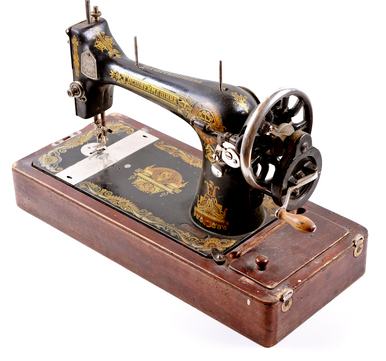The collection of the Kasimov Museum-Reserve contains a music box which was made in 1816. It still works and plays six melodies which were popular in the 19th century.
The music box is a wooden box inside of which there is a round drum with pins. There is a hole on the right side, where the handle is inserted and rotated clockwise. The handle tightens the spring inside and makes the drum move. A melody plays while the spring is unwinding.
Since the Middle Ages, music boxes — wooden storage boxes — were a symbol of well-being of their owners. Wealthy people often had several types of such boxes: for threads and needles, for jewelry and money. Music boxes appeared only in the late 18th century when the Swiss craftsman Antoine Favre invented the mechanism which could play short melodies.
Antoine Favre was a watchmaker, so at first, his mechanism was installed in watches. Then, it started to be used for perfume bottles. Over time, the mechanism became more complicated and it began to be put in separate wooden boxes — and then, music boxes appeared. The first factory of music boxes was opened in Switzerland in 1815. From there they were delivered abroad including Russia.
The boxes were of various sizes: from the tiny ones that could be placed in a palm to the large ones like a small bedside table. The bigger the device was, the better and louder the sound was. On average, the music box played no longer than one minute. Due to this, there were only the most popular songs so that listeners could recognize the melody even in a short time.
Later, music boxes began to be decorated with flowers, geometric patterns and floral ornaments. Figures of birds, ballerinas or pictures were put inside them: the figures rotated while music was playing.
Moreover, it was used not only for playing music but storing small items. For example, people stored their most secret things: love letters and notes, invitation cards to balls and special evenings, ribbons, hand fans, as well as perfumed cambric handkerchiefs.
The music box is a wooden box inside of which there is a round drum with pins. There is a hole on the right side, where the handle is inserted and rotated clockwise. The handle tightens the spring inside and makes the drum move. A melody plays while the spring is unwinding.
Since the Middle Ages, music boxes — wooden storage boxes — were a symbol of well-being of their owners. Wealthy people often had several types of such boxes: for threads and needles, for jewelry and money. Music boxes appeared only in the late 18th century when the Swiss craftsman Antoine Favre invented the mechanism which could play short melodies.
Antoine Favre was a watchmaker, so at first, his mechanism was installed in watches. Then, it started to be used for perfume bottles. Over time, the mechanism became more complicated and it began to be put in separate wooden boxes — and then, music boxes appeared. The first factory of music boxes was opened in Switzerland in 1815. From there they were delivered abroad including Russia.
The boxes were of various sizes: from the tiny ones that could be placed in a palm to the large ones like a small bedside table. The bigger the device was, the better and louder the sound was. On average, the music box played no longer than one minute. Due to this, there were only the most popular songs so that listeners could recognize the melody even in a short time.
Later, music boxes began to be decorated with flowers, geometric patterns and floral ornaments. Figures of birds, ballerinas or pictures were put inside them: the figures rotated while music was playing.
Moreover, it was used not only for playing music but storing small items. For example, people stored their most secret things: love letters and notes, invitation cards to balls and special evenings, ribbons, hand fans, as well as perfumed cambric handkerchiefs.

